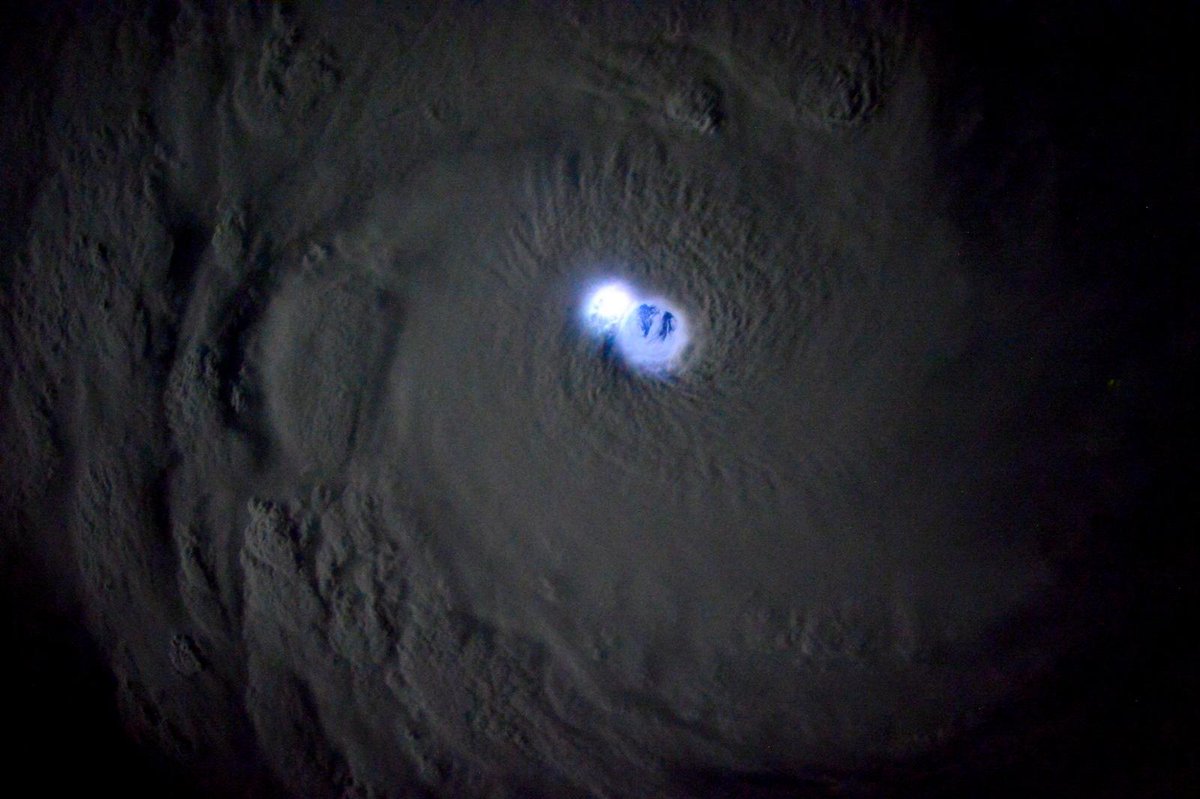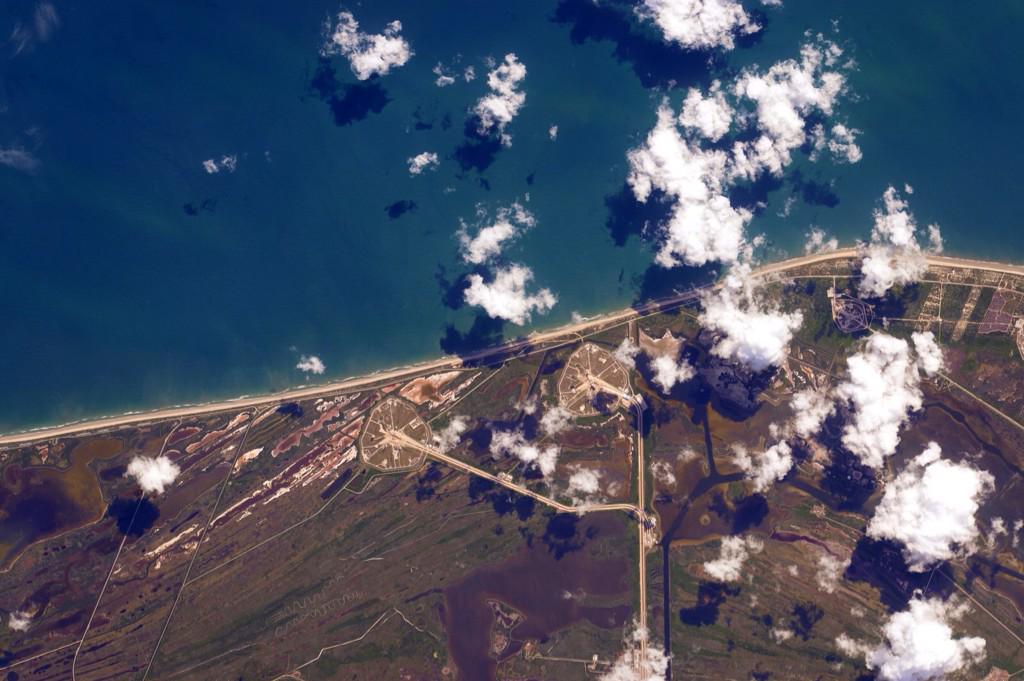| It never gets old. (Image courtesy theguardian.com.) |
In January, a SpaceX Dragon capsule resupplied the station and brought up a bevy of fruit flies for experimentation (their immune systems are similar to ours, making them perfect for experimentation.) The astronauts also worked with a haptic system to remotely control a robot on the planet below, which could come in handy for future explorations.
In February, the first of several superstorms began popping up on the radar. Fortunately the storms had no impact on the ISS. As for the non-human ISS residents, astro-android Robonaut got his legs attached, while the Canadarm-2 helped a "robotic handoff" of a shipment of satellites.
 |
| Tropical Cyclone Bansi made for some interesting viewing. (Image courtesy Samantha Cristoforetti.) |
In March, astronauts Barry Wilmore and Terry Virts conducted three different spacewalks for station maintenance and improvements. Shortly thereafter, the One-Year Crew of astronaut Scott Kelly and cosmonaut Mikhail Kornienko arrived, capturing the world's attention with their massive mission. A protein data bank of different organisms was tended to on the ISS, and science regarding radiation effects on the station was carried out thoroughly. Plans were discussed for a new US-Russian space station starting in 2024, and the safe arrival of the One Year Crew ensured that many hundreds more experiments would be taking place before then.
In April, another SpaceX cargo craft arrived, bearing more science and supplies for the crew. New experiments got underway, including one analyzing bone density loss in space, and another assessing fine motor skills in micro-gravity. The ISS received a very special "ISSpresso" coffee machine, the first of its kind, to help fuel the astronauts with delicious fresh caffeine. Supertyphoon Maysak was spotted from the station, looking somehow even scarier than the vicious weather pattern would appear on earth.
| And if you gaze long enough into the supertyphoon, the supertyphoon gazes into you. (Image courtesy dailymail.co.uk.) |
In May, the Sprint study assessed how heavy exercise helped maintain bodily structures and functions in space. The Robotic Refueling mission proved that the Canadarm-2 grappler could be used to service spacecrafts and satellites sans spacewalking from the station's inhabitants. An unmanned SpaceX crew capsule was launched successfully from Cape Canaveral, proving that the US spaceflight industry is planning to do much more than mere milk runs to the ISS. Upon landing, tests on a dummy inside the capsule proved that a live human would have been just fine for the ride. As for the Russians, they experimented with the ability to detect earthquakes from space.
In June, the ISS dodged some space debris with no worry. Astronaut Cristoforetti earned the world record for longest accrued time by a woman in space - 196 days - shortly before returning home with the other two members of the Expedition 43 crew. Unfortunately, a resupply to the station failed when the SpaceX rocket (bearing among other things, an international docking adapter for a spacecraft port) exploded upon launch. NASA and SpaceX both remained optimistic, with Scott Kelly simply commenting, "Space is hard."
 |
| Kelly captured the launch explosion from above, making it look surprisingly peaceful. (Image courtesy Scott Kelly.) |
 |
| More space-based spectacularity to follow! (Image courtesy Scott Kelly.) |

No comments:
Post a Comment